Quail Waterers
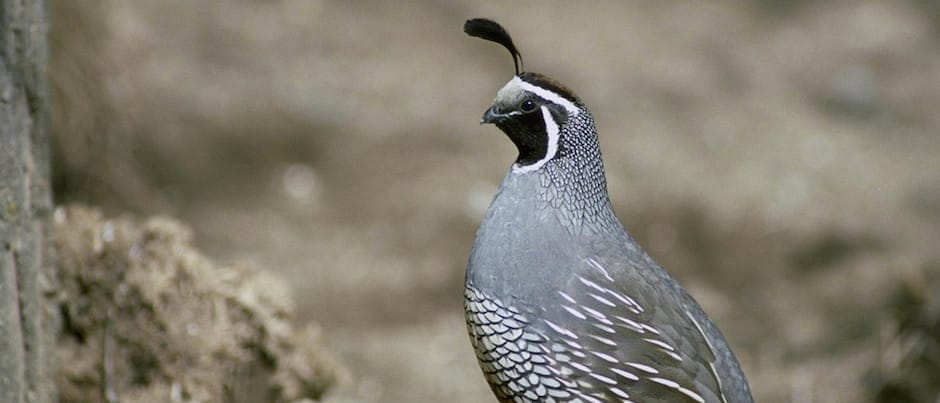
Here is an interesting new quail waterer. While many quail experts say desert quail do not need water, noted quail expert Dr. Fred Guthery says that of all the quail work he has done, water additions are the single best practice. He is correct: In the desert, if you are looking for quail, look near water.
NOTE: post initially appeared on AirSolarWater.com
Support Desert Wildlife and Bio-Diversity During Drought.
Artificial Water sources can help desert wildlife survive during drought.
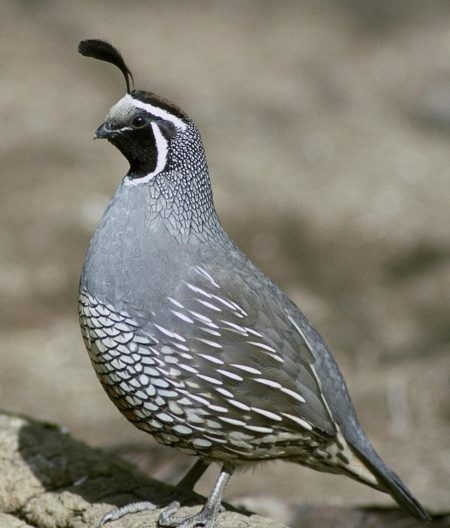
Water scarcity can make it difficult for animals to survive during hot summer months. Life becomes even more difficult during extended droughts due to reduced food supply combined with dried out water holes. Climate change is causing more severe droughts that last longer and occur more often. Dr Fred Guthery indicates that desert adapted animals like quail can thrive with higher populations when water is available.
Many water sources including rain capture and dew harvest systems can dry out during drought when animals most need the water. Air solar Water can provide wildlife with water even during extended droughts when other water sources fail. Order Now
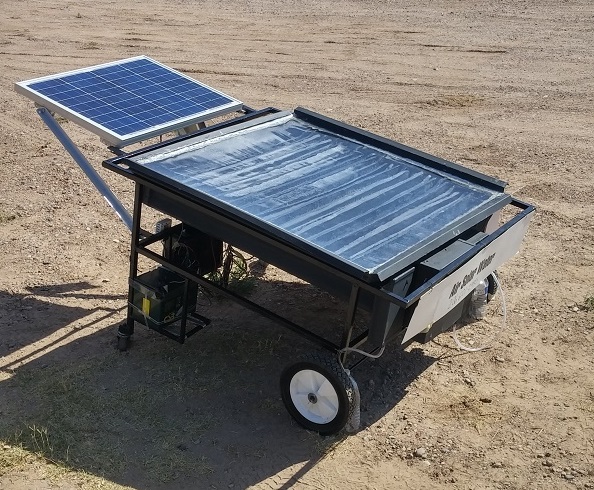
Background
We learned about how Air Solar Water could be used to support desert wildlife while attending a outdoor and sporting show in Texas. In this part of the Texas desert they are lucky to receive 10 inches of rain and have been experiencing a multi-year droughts that has negatively affected bird and deer populations in the area.
The Ranger who told us about the problem was interested in bird species where a continued drop in population could threaten the species. Many other people indicated an interest simply to increase the number of animals at their favorite spots.
The ranger also described conditions where Air Solar Water could provide water in wildlife migration corridors to help guide wildlife populations through very dry areas to locations where they are better able to survivor and would be unlikely to discover on their own.
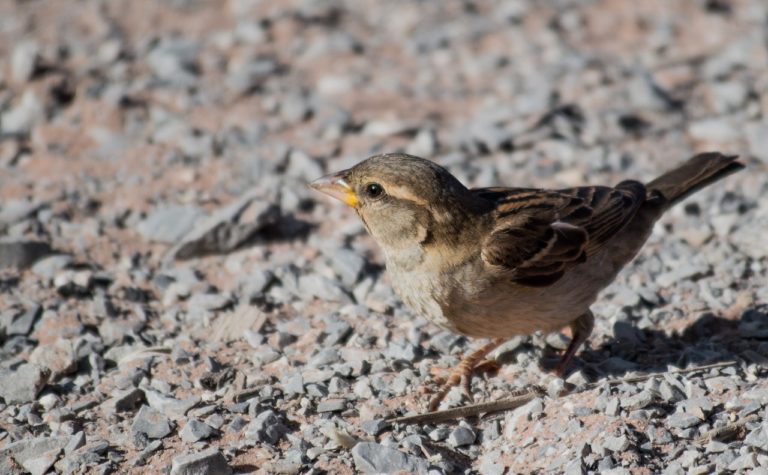
Air Solar Water Ideal to support wild animals
Air Solar Water is ideal to deliver water to wildlife because it can be provide watt where it is needed when the water is most needed such as the hottest driest part of the summer. Air Solar Water is sufficiently portable to install in very remote locations and will deliver water for years once installed.
Air Solar Water is designed to provide water in remote locations where it is hot and sunny and where there is no infrastructure such as wells or grid power available. This makes it ideal to augment natural water sources in difficult to access locations where the wildlife is located. It’s ability to continue delivering water through extended droughts without a dependency on ground water allows flexible placement infeasible for other approaches.
Air Solar Water provides the unique feature of delivering the most water during the hottest, sunniest summer days when animals need water the most desperately.
Another use of Air Solar Water is to help start and support desert adapted trees that can provide food and shelter in increasingly harsh conditions. Our proposed solution takes any water not consumed by animals and uses it to support forage trees that can further help the wild animals.
How Air Solar Water Works for Wildlife

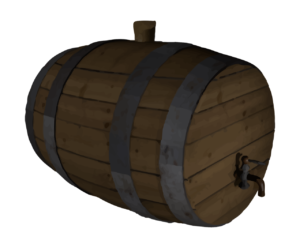
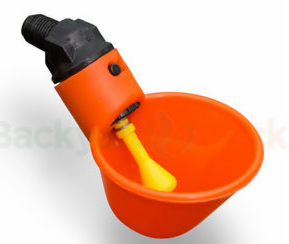

- Our Air solar water system produces water which trickles out of the system into a tube.
The tube feeds into storage tank where excess water is stored.
Water is gravity fed from tank into Animal feeder. - Different animals require different feeders.
- Different animals require varying amounts of water.
- Animal Drink from the Feeder
- Float valve refills the feeder as animals consume the water.
- Excess water is fed to edible trees to help support the animals.
- The system can be located up hill in a barren sunny spot while the feeder can be located in shade or trees where animals are more comfortable.
You Can Help
- We need support from charities interested in desert wildlife preservation and the closely related topic of preserving biodiversity during extended drought.
- It costs less than $5,000 to build and install a desert watering station to support quail.
- We need private donors willing to fund a number of these stations.
We need wildlife biologists and ecologists to plan, measure and report on the impact of these stations. - We need sponsors well connected with the government to help obtain permits for these water stations especially on state, BLM and forest service land.
- Have a desert ranch undergoing drought? We would love to collaborate and test the impact of these watering stations.
- Answer the questions in the open questions section below.
See Also: Wildlife Philanthropy | charity funding Wildlife, Ecology and Animals
Email us at: info@airsolarwater.com or call 206.601.2985 if you want to help or are interested in funding a wildlife watering station.
History
There are a wide range of desert wildlife watering stations typically called guzzlers that date back to the 1950’s. Many of these include the ability to capture rain or morning dew. These artificial water sources have proven beneficial to local wildlife but they have a serious problem of drying out when the water is most needed by local animals. Images of Wildlife Watering systems
Historical Problems
Rain or dew are rare in many desert locations during extended drought. Dew is only available when the humidity is high enough to reach close to the dew point which normally happens during the spring when water relatively abundant but not during the peak summer heat.
The net result is that dew and rain harvest systems dry out and fail to deliver water during the warm summer months especially during droughts when wildlife experiences increased water stress.
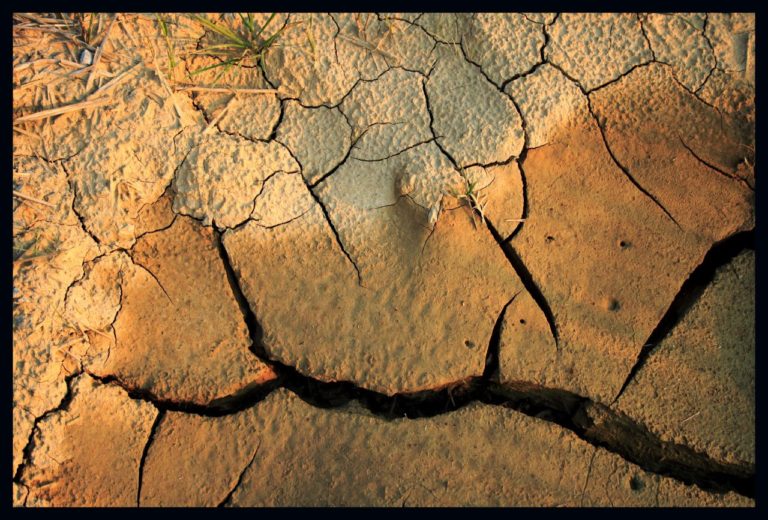
This is particularly traumatic during extended droughts because the plants and seeds desert adapted animals like quail eat to augment their water are either dried out or have already been eaten. This increases their need for supplemental water especially during hot summer conditions.
Rain and dew capture systems create the scenario of having a larger animal population dependent on the supply which fails during the worst time when animals desperately need the water. They are still beneficial but they can not be the entire solution.
Air Solar Water provides water when the most needed
Air Solar water use an alternative design that absorbs moisture at night and converts it into high quality potable water. The process depends mostly on solar energy which is abundantly available during desert drought conditions.
It tolerates low humidity by using a trick of physics that allows our desiccant salt to chemically absorb moisture from the night air and then use plentiful desert sunshine to convert this moisture into clean water. These systems will be producing water every sunny day for many years regardless of drought conditions.
Open Questions:
- How many birds can we support with a unit to supplies 50 ounces of water per day?
- Assuming we use the small float based watering devices shown above. How many watering outlets do we need to allow birds to consume all the water from a 40 ounce per day system. How should they be spaced?
- What density of units do we need to support the maximum density of birds that could survive on local feed? eg: 3 units per acre?
- Where in the USA are potentially threatened bird species concentrated where water scarcity is contributing to survival stress? Who cares about the problem?
Who is funding work / tests to preserve bird populations in dryland drought areas? - Where are wildlife biologists and ecologists most interested in this kind of problem and who are well suited to measure the results from these artificial water sources concentrated? Specific names and contacts help the most.
About the Author
Joseph Ellsworth is the CTO of Air Solar Water and has been working on water related issues and Atmospheric Water Generators for over a decade. Over a 30 year career he has filled roles such as CTO. Director, Senior Director, Chief Architect, Chief Scientists for major companies including HP, Amazon, Corbis, NCS, etc. He is passionate about solving water related issues world wide. He can be reached atinfo@airsolarwater.com or call 206.601.2985
References:
- Desert Quail and Water circle ranch TX – In the desert when looking for quail look for water. Dr Fred Guthery indicates water additions are a practice he would repeat. Water is needed to support abundant life in the desert. Adding Water to a location where none previously existed can have a dramatic effect on wildlife creating points of concentration as illustrated by guzzler array funded by Texas Bighorn Society (TBS)
- Audubon guide to quail – Sonora desert home range. Often located near streams and waterholes. Conveys walk to water morning and evening.
- Science Daily drought can delay nesting – Some Sonoran Desert species sometimes forego breeding entirely during extreme drought. Widespread delayed nesting of birds in arid ecosystems,” says McCreedy. “These responses are predicted to become more frequent and extreme, due to climate change, causing us to question how desert birds will persist in the long-term.” This study highlights drought as a key threat to bird in arid landscapes. In the recent 2014 National State of the Birds Report, birds in arid landscapes were found to show the steepest declines, nationwide. – Chris McCreedy, Charles van Riper. Drought-caused delay in nesting of Sonoran Desert birds and its facilitation of parasite- and predator-mediated variation in reproductive success. The Auk, 2014; 132 (1): 235 DOI: 10.1642/AUK-13-253.1
- California our changing climate vulnerability & Adaptation to increasing risks 2012 – Animals and plants need connected migration corridors to allow them to move to more suitable habitats. Predicts continued increase in temperatures as much as 8.6F by 2100. Heat waves will be more frequent, hotter and longer . San Diego precipitation to decrease by more than 8%. Critically dry water years could occur 32 percent more often in the San Joaquin Valley. Wildlife Managers may need to assist species in relocating to suitable habitats.
- California Climate Change Plan 2015 – Page 35 – extreme weather-related events are likely to become more frequent and intense in California (Mastrandrea et al. 2012).
- New Mexico Climate Change Adaptation project climate change report – 95% of state experience temperature increase. Warming greatest in western and central parts of the state. 48 cases of ecological changes linked to climate change. Over 50 native species affected by climate change. High mountain and water defendant species particularly vulnerable. Planning framework developed by a Wildlife Conservation Society (WCS) and National Center for Ecological Analysis and Synthesis (NCEAS) 48 cases of observed ecological changes with over 1/2 including population declines.
- Climate change Vulnerability Assessment for Biodiversity in New Mexico and Southwest region – High elevation forests and woodlands experienced consistently warmer and drier conditions while grasslands were wetter and less variable. High elevation conservation areas may be most vulnerable to climate change due to drought sensitive species and magnitude of recent warmer-drier conditions. This includes San Luis/Peloncillo Mountains, Jemez Mountains, Southern Sangre De Cristo Mountains.
- Confronting Climate Change in New Mexico union of Concerned Scientists
- “Climate changes pose challenges for an already parched region that is expected to get hotter and, in its southern half, significantly drier.” — Third National Climate Assessment
- Temperatures in New Mexico are projected to rise another 3.5 to 8.5°F by 2100 (Kunkel et al. 2013).3
- Summer of 2012 was one of the hottest in Albuquerque’s history. That year, the city recorded 85 days with temperatures of 90°F or higher (U.S. Climate Data 2012)
- White house press what climate change means for new mexico and the southwest – This paper includes a great set of reference links to support additional research.
- Increased heat and changes to rain and snowpack will send ripple effects throughout the region, affecting 56 million people.
- Snowpack and streamflow amounts are projected to decline in parts of the Southwest, decreasing surface water supply
- Increased warming, drought, and insect outbreaks, all caused by or linked to climate change, have increased wildfires and impacts to people and ecosystems
- “Increased frost-free season length, especially in already hot and moisture stressed regions like the Southwest, is projected to lead to further heat stress.
- Rio Grande, and rivers in the Great Basin—was 5 to 37 percent lower
- New Mexico entered a severe six-year drought in 2009, by some measures the worst in more than a century, following closely on the heels of an intense drought in the early 2000s (Fleck 2014a).
- When heavier precipitation falls on drought-hardened or wildfire-transformed soil, which has a reduced ability to absorb moisture, more of the water runs off into streams instead of percolating into the ground (Chief et al. 2008). This can lead to flash floods, as occurred in 2014, when 90 percent of New Mexico experienced extreme or exceptional drought (Crimmins et al. 2014).
- History of Wildlife Water development, Inyo County California by California department of fish and game. Artificial catchments have proven to be beneficial. The newer fiberglass catchments are easy to install but in extremely arid areas dry out and require water to be hauled in. Larger concrete catchments disrupt natural water flows can cause significant disruption of local soil during installation. Includes good set of reference links.
- Gambels Quail (Callipepla gambelii) – Quail may be critical for survival during host summer but may not be required at other times. No Convey were observed more than 1.5 miles from permanent water source at Joshua Tree National Park. Quail are located in a wide variety of deserts including the Mohave Desert.
- Bent, A. C. 1932. Life histories of North American gallinaceous birds. U.S. Natl. Mus. Bull. 162. 490pp.
- Edminster, F. C. 1954. American game birds of field and forest. Scribner’s Sons, New York. 490pp.
- Garrett, K., and J. Dunn. 1981. Birds of southern California. Los Angeles Audubon Soc. 408pp.
- Gorsuch, D. M. 1934. Life history of the Gambel quail in Arizona. Univ. Arizona Bull. 5:1-89.
- Grenfell, W. E., B. M. Browning, and W. E. Stienecker. 1980. Food habits of California upland game birds. Calif. Dep. Fish and Game, Sacramento. Wildl. Manage. Br. Admin. Rep. No. 80-1. 130pp.
- Grinnell, J., and A. H. Miller. 1944. The distribution of the birds of California. Pac. Coast Avifauna No. 27. 608pp.
- Gullion, G. W. 1960. The ecology of Gambel’s quail in Nevada and the arid southwest. Ecology 41:518-536.
- Gullion, G. W. 1962. Organization and movements of coveys of a Gambel quail population. Condor 64:402-415.
- Harrison, C. 1978. A field guide to the nests, eggs and nestlings of North American birds. W. Collins Sons and Co., Cleveland, OH. 416pp.
- Harrison, C. J. O., ed. 1978. Bird families of the world. Harry N. Abrams, Inc., New York. 264pp.
- Henderson, C. W. 1971. Comparative temperature and moisture responses in Gambel and scaled quail. Condor 73:430-436.
- Hensley, M. M. 1954. Ecological relations of the breeding bird population of the desert biome in Arizona. Ecol. Monogr. 234:185-207.
- Hungerford, C. R. 1962. Adaptations shown in the selection of food by Gambel quail. Condor 64:213-219.
- Johnsgard, P. A. 1973. Grouse and quails of North America. Univ. Nebraska Press, Lincoln. 553pp.
- Leopold, A. S. 1977. The California quail. Univ. California Press. Berkeley. 281pp.
- Mallette, R. D., and J. R. Slosson. 1980. Upland game of California. Calif. Dep. Fish and Game, Sacramento. 76pp.
- McNabb, F. M. A. 1969. A comparative study of water balance in three species of quail II. Utilization of saline drinking solutions. Comp. Biochem. Physiol. 28:1059-1074.
- Miller, A. H., and R. C. Stebbins. 1964. The lives of desert animals in Joshua Tree National Monument. Univ. California Press, Berkeley. 452pp.
- Neff, J. A. 1941. Arboreal nests of the Gambel quail in Arizona. Condor 43:117-118.
- Raitt, R. J., and R. D. Ohmart. 1966. Annual cycle of reproduction and molt in Gambel quail of the Rio Grande Valley, southern New Mexico. Condor 68:541-561.
- Terres, J. K. 1980. The Audubon Society encyclopedia of North American birds. A. Knopf, New York. 1100pp.
- California Department of Fish and Game. California Interagency Wildlife Task Group. 2005. California Wildlife Habitat Relationships version 8.1 personal computer program. Sacramento, California.
- Wildlife review what the heck is a guzzler and why are they so important to wildlife.
- USDA Guzzler requirements Pronghorn 0.25 gal per day every 1 to 4 miles. Mule Deer 0.75 gal per day 0.5 to 4 miles. Chukar 1 gal per bird per 180 days. 0.5 to 3 miles. California Quail 1 gal per bird per 180 days 0.25 to 1 mile. Great set of design cand placement criteria along with good set of links.
- Water for West Texas Wildlife by Texas Parks and Wildlife
- Sanders Real-estate water in west Texas – Claims small guzzlers cost about 3K to install. Small through 12″ wide by 24″ long by 6″ deep. Include edges with ramp to all small animals to use it. Screen the float valve to avoid damage. Rain capture varies by area but brewer county needs about 800 sq foot. Texas Parks and Wildlife Department has quite a number of guzzlers at Black Gap Wildlife Management Area, Elephant Mountain Wildlife Management Area and the Desert Bighorn Sheep area near Van Horn.
- Good Guzzlers, water for wildlife – Texas Parks and Wildlife You Tube Video Texas Bighorn Society. Land was suitable for one thing but was missing water. The Guzzlers add the water. Mentions Kathy Boone President Texas Bighorn Society. Took 100 people to build two guzzlers TexasBighornSociety.org
- Harvesting Rainwater for Wildlife – TAMU Wildlife and Fisheries Extension YouTube Video Good overview of the planning process. Large Animals can travel 1/2 to 1 mile. Smaller animals will travel shorter distances. Includes chart with rainfall by city in Texas. Also shows how to use runoff coefficient
- The Big Bend Guzzler war Desert Guzller testimony works great to attract deer and other wildlife in the Chihuahuan desert but need to be careful about location due to termites who also like the water.
- Reversing the Quail Decline Texas Wildlife Habitat Federation Model TAMU Wildlife and Fisheries Extension. Several groups working on the problem. Establishing animal cooridoor to help revive bird populations.
- How to Construct a guzzler with zero moving parts
-
- Guzzler design requirements per NRCS
- Design for a Durable and Inexpensive Guzzler
- Basic Guzzler design
- How to build a birdbath guzzler
- Oasis Wildlife Watering Systems walk through youtube video simple plastic system but needs manual refill.
- Quail Unlimited Ventura County has built several Guzzlers around California including on the peak of Rocky Peak of Simi Valley. Mike Taylor is County Chairman of the group. Quail Unlimited closed but seems to have reformed around Quail Forever. See: Quail Unlimited Implodes Quail Forever seems to be going strong with 145,000 members. California Chapters Near Mohave CA See: Find a Chaper search for zipcodes 95301.
- Texas A&M Agrilife Extension Harvesting Rainwater for Wildlife – Great set of simple designs for rain capture wildlife watering systems. Shows nice fence setup to keep larger game out. Includes rainfall by main cities in Texas along with rainfall per month east versus west.
- NRCS is making life a little easier for wildlife in drought stricken west Texas by installing passive Water Guzzlers. Youtube Video
- Texas Wildlife org – water resources, stewardship, conservation
- Oases in the Desert: What Do Altered Water Regimes Mean for Sonoran Desert Species? By Southwest Climate Change Org – They have active water augmentation projects. Make a good point about keeping desert animals out of the city by providing alternative water sources may improve species survival rates. They are actively partnering with the community to implement. Contact Kim Franklin atkfranklin@desertmuseum.org or Clare Aslan at caslan@desertmuseum.org
- Managing Changing Landscapes in the Southwestern United States by Southwest Climate Change Initiative of The Nature Conservancy In collaboration with Marcos Robles and Carolyn Enquist – Rising temperatures and drought have led to drier conditions, contributed to large-scale ecological impacts, and affected many plant and animal species across the region. At least 119 plant and animal species within these habitats have been affected by climate change. . What is different now is that rising temperatures associated with human activities amplify the magnitude and severity of natural disturbances.
